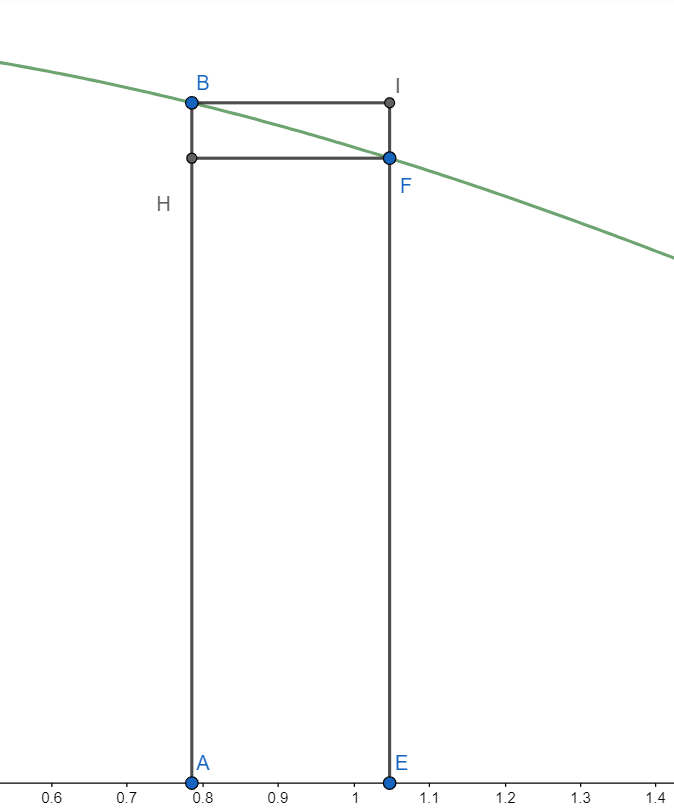Question
Question: Let \(I=\int_{\dfrac{\pi }{4}}^{\dfrac{\pi }{3}}{\dfrac{\sin x}{x}dx}\), then [a] \(\dfrac{1}{2}\...
Let I=∫4π3πxsinxdx, then
[a] 21≤I≤1
[b] 4≤I≤230
[c] 83≤I≤62
[d] 1≤I≤223
Solution
Hint: Use the fact that xsinx is decreasing function in the interval (4π,3π).
Use the fact that if f(x) is a decreasing function in (a,b), then f(b)(b−a)≤∫abf(x)dx≤f(a)(b−a).
Hence find the corresponding range of ∫4π3πxsinxdx.
Complete step-by-step answer:

The green curve is of xsinx, A≡(4π,0) and E≡(3π,0).
As is evident from the graph, the area of rectangle BIEA is more than the value of the integral, and the area of the rectangle HFEA is less than the value of the integral.
Now we have
Area of rectangle BIEA =AE×AB=4πsin(4π)(3π−4π)
Now, we know that sin(4π)=21
Using, we get
Area of rectangle BIEA =π21×4×(124π−3π)=321
Multiplying the numerator and denominator by 2, we get
Area of rectangle BIEA =62.
Also, the area of rectangle HFEA =AH×AE=3πsin(3π)×(3π−4π)
We know that sin(3π)=23
Using, we get
Area of rectangle HFEA =π23×3×12π=83
Now we know that the area of rectangle BIEA is more than the value of the integral and the area of the rectangle HFEA is less than the value of the integral.
Hence we have
83≤I≤62
Hence option [c] is correct
Note: If M is the maxima of f(x) and m is the minima of f(x) in the interval (a,b), the we have m(b−a)≤∫abf(x)dx≤M(b−a)
Now let f(x) =xsinx, we have
f′(x)=x2xcosx−sinx⇒f′(x)=cosxx2x−tanx
Now, we know that tanx≥x,x∈(0,2π) and in the interval (4π,3π),x>0,cosx<1. Hence, we have
cosxx2x−tanx≤0
Hence we have
f′(x)≤0
Hence f(x) is a decreasing function in the interval (4π,3π).
Hence we have
∀x1,x2∈(4π,3π) if x1<x2, then f(x1)≥f(x2).
Hence we have m=3πsin(3π)=2π33 and M=4πsin(4π)=2π42
Hence we have
2π33(12π)≤I≤2π42(12π)⇒83≤I≤62
Hence option [c] is correct.
[2] Inequality tanx≥x,x∈(0,2π) follows from LMVT
Apply LMVT in [0.x] where x∈(0,2π), we have x−0tanx=sec2c,c∈(0,x).
Now, we know sec2x≥1
Hence, we have
tanx≥x
